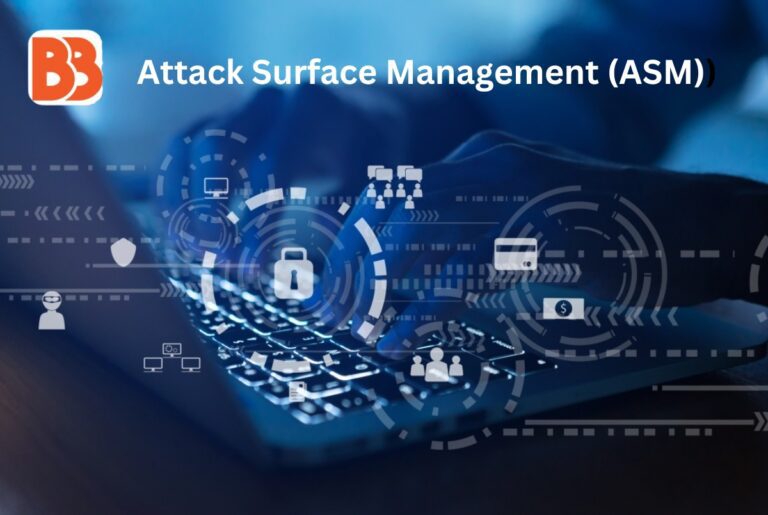Together, Attack Surface Management (ASM) and CTEM empower organizations to identify, prioritize, and mitigate vulnerabilities in real time. With the adoption of cloud infrastructure, Internet of Things (IoT) devices, APIs, and remote work, managing this attack surface has become more complex than ever. This challenge has propelled Attack Surface Management (ASM) into the spotlight as a critical component of Continuous Threat Exposure Management (CTEM). Let’s have a glance at this article to explore the role of ASM in CTEM, highlighting its significance, components, and how it strengthens enterprise cybersecurity strategies.
Understanding Attack Surface Management (ASM)
Attack Surface Management (ASM) involves continuously discovering, monitoring, and analyzing all digital assets and exposure points that can be exploited by cybercriminals. The goal of ASM is to provide visibility into known and unknown assets, assess their risks, and reduce the overall attack surface.
In simpler terms, ASM helps answer critical questions:
- What digital assets does the organization have?
- Which of these assets are vulnerable to attacks?
- How can the organization prioritize and address these risks?
When integrated with Continuous Threat Exposure Management, ASM ensures that organizations can dynamically monitor threats across their entire digital footprint and mitigate exposures before they are exploited.
Why ASM is Vital in CTEM
CTEM focuses on continuously identifying, prioritizing, and mitigating security exposures to create a proactive defense strategy. ASM complements this by offering visibility and control over the attack surface helping organizations identify potential threats before they escalate.
Real-Time Visibility of Assets
In a digital-first world, organizations operate across complex IT ecosystems on-premises, cloud, IoT devices, third-party integrations, and beyond. ASM ensures that security teams have a clear, real-time view of every asset, including previously unknown or shadow IT assets. Without this visibility, exposures can go unnoticed, leaving organizations vulnerable.
Proactive Risk Identification
ASM continuously scans and assesses the attack surface to identify risks such as:
- Misconfigurations in cloud environments
- Outdated or unpatched software
- Exposed APIs or ports
- Vulnerable endpoints
By providing continuous insights, ASM enables security teams to identify and remediate risks early, aligning with CTEM’s proactive approach.
Prioritizing Threats Based on Risk
Not all vulnerabilities pose the same level of risk. ASM works with CTEM frameworks to prioritize threats based on factors like:
- Likelihood of exploitation
- Potential business impact
- Asset criticality
This prioritization helps security teams focus on the most significant risks, ensuring efficient resource allocation.
Reducing Shadow IT Risks
Unmanaged or unapproved assets also known as shadow IT pose significant threats. ASM uncovers these assets, providing organizations with full control over their digital footprint. This reduces risks caused by unsecured systems or unauthorized access points.
Continuous Adaptation to Changing Environments
Modern attack surfaces are dynamic, with assets frequently being added, modified, or decommissioned. ASM ensures that CTEM strategies keep pace with changes, providing continuous monitoring and instant updates on new risks.
Key Components of Attack Surface Management
To strengthen CTEM, ASM comprises several core components that enhance its effectiveness:
- Asset Discovery and Inventory: ASM tools identify all digital assets web servers, endpoints, cloud infrastructure, IoT devices, and third-party integrations to create a complete asset inventory.
- Risk Assessment and Analysis: After identifying assets, ASM analyzes them for vulnerabilities, misconfigurations, or security gaps.
- Continuous Monitoring: Unlike traditional periodic assessments, ASM offers real-time monitoring to detect changes, exposures, or threats as they occur.
- Threat Prioritization: ASM prioritizes risks based on severity, likelihood, and impact, helping organizations address critical issues first.
- Remediation Guidance: ASM tools often provide actionable insights and recommendations to address vulnerabilities, enabling faster remediation.
Benefits of ASM in a CTEM Framework
By integrating ASM into a Continuous Threat Exposure Management framework, organizations gain several key benefits:
- Improved Cyber Resilience: ASM ensures that organizations can identify and fix exposures before they are exploited, reducing the risk of breaches and downtime.
- Enhanced Visibility: With real-time insights into the attack surface, organizations gain full visibility into their security posture across cloud, on-premises, and hybrid environments.
- Cost Efficiency: Proactively managing vulnerabilities reduces the financial impact of cyber incidents. Addressing exposures early is far more cost-effective than responding to a breach.
- Faster Incident Response: ASM reduces response times by highlighting high-priority risks and offering remediation guidance, enabling security teams to act quickly.
- Compliance Readiness: For industries subject to regulatory requirements, ASM helps meet compliance standards by ensuring that all assets are secured and monitored continuously.
The Future of ASM in CTEM
As cyber threats continue to evolve, ASM will play an even more prominent role in CTEM. Future advancements in ASM will include:
- AI and Machine Learning Integration: AI will enhance ASM by automating asset discovery, predicting vulnerabilities, and improving threat prioritization.
- Integration with Threat Intelligence: ASM will incorporate real-time threat intelligence feeds, enabling organizations to adapt quickly to emerging attack methods.
- Zero Trust Adoption: ASM will align with Zero Trust security models, ensuring continuous monitoring and verification of all assets and endpoints.
- Enhanced Automation: Automation will streamline vulnerability detection and remediation, reducing the burden on security teams.
Conclusion
Attack Surface Management (ASM) is a critical pillar of Continuous Threat Exposure Management (CTEM), providing organizations with the visibility, insights, and tools needed to proactively manage risks. By continuously discovering assets, assessing vulnerabilities, and prioritizing threats, ASM enables enterprises to stay ahead of attackers and strengthen their cybersecurity posture. In today’s dynamic and evolving threat landscape, integrating ASM into CTEM is no longer optional it’s a necessity. By leveraging ASM and embracing emerging technologies like AI and automation, organizations can build a resilient, proactive defense against cyber threats and ensure their long-term security in an interconnected world.
Read More:
Blockchain and Decentralization in Collaborative Ecosystems
Exploring Quantum Key Distribution (QKD) and Its Relationship to PQC
